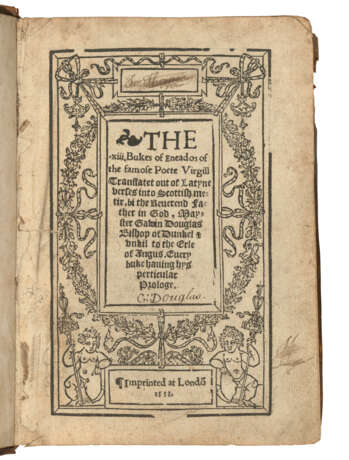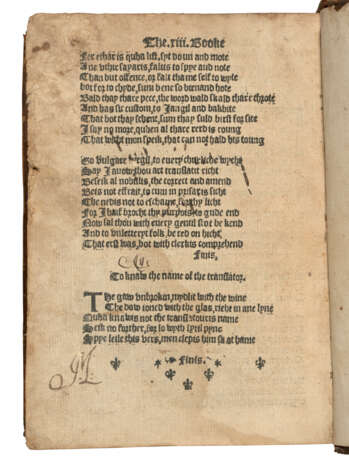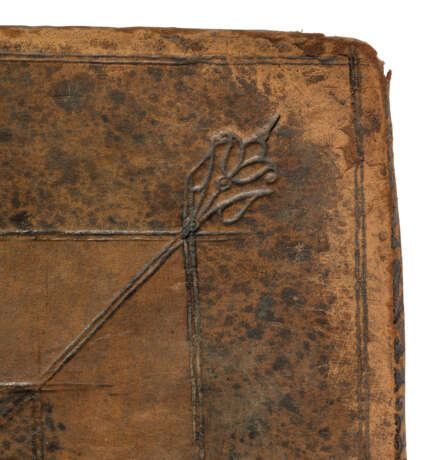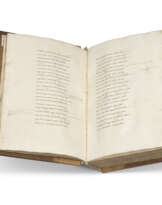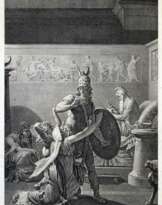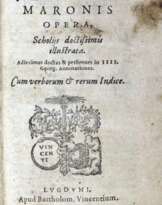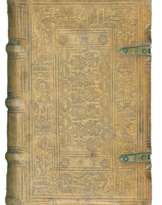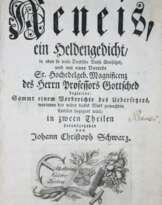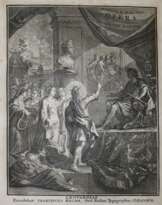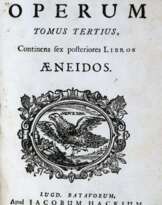ID 794573
Lot 128 | VERGILIUS MARO, Publius (70-19 BCE)
Valeur estimée
£ 10 000 – 15 000
The xiii bukes of Eneados of the famose poete Virgill translatet out of Latyne verses into Scottish metir, bi the Reuerend Father in God, Mayster Gawin Douglas Bishop of Dunkel. London: [William Copland], 1553.
Very rare first edition of the first translation of Virgil's Aeneid into Scots, and the first into any vernacular British tongue. Gavin Douglas (c.1476-1522), the bishop of Dunkeld, was a poet heavily influenced by classical literature. In 1501, he composed the long and complex The Palice of Honour using the form of an allegorical dream. By 1513, he had completed his translation of the Aeneid, 'Douglas's greatest claim to fame' (ODNB). The result was pioneering and hugely influential. Where Caxton's recent publication was more of a free-form rendering, Douglas set great store by attempting a faithful translation using contemporary editions and explanatory glosses indicating wide reading and depth of knowledge. 'In the early 1500s no major classical work had been translated into English ... Douglas shared the values of the humanists: an antipathy to scholasticism, respect for classical authors, and a zeal for education. He wished to communicate to his countrymen a knowledge of the Aeneid, and also to enrich his native "Scottis" tongue with something of the "fouth", or copiousness, of Latin' (ODNB). In addition to the epic, Douglas composed his own original verse prologues to each of the books, through which we hear the translator's thoughts and ideas on Virgil, Chaucer, the problems of translation, and even glimpses of the poet in the throes of composition. The 12 books are supplemented by Douglas' translation of Maffeo Vegio's extra verse that was routinely added to editions of the Aeneid until the 17th century.
Although the printer remains anonymous, Pforheimer ascribes it to William Copland on the basis that it was meant to be published together with his printing of Douglas' The Palice of Honour (one of Cambridge University's copies is thus bound). STC 24797; Pforzheimer 1027; ESTC S119190.
Quarto-in-8s (200 x 140mm). Black letter, woodcut initials, title and imprint within illustrated woodcut border [McKerrow & Ferguson 49] (perhaps lacking final blank bb8 although Pforzheimer suggests this was used to print the ninth leaf in gathering X present here, staining to C1-6, a few other leaves with some occasional light staining, some soiling, staining and wear in top corner from gathering u to end with softening of paper at fore-edges of final few leaves with consequential light chipping, light dampstain from gathering z to end). 17th-century panelled calf, later lettered 'Charleton' in gilt on upper cover, spine in six compartments (spine worn with only a few remnants of label, headcap worn with loose headband, top corner of lower board softened by damp and with calf worn). Provenance: John Thomson of Charleton (1710-1787; ink ownership inscription dated 1760 on title, and engraved armorial bookplate dated 1786; thence by descent to his grandson:) – J. A[nstruther-] Thomson (1776-1833; ink ownership inscription on preliminary leaf) – 'J.M.L.' (ink cipher, semi-erased in margin of title, repeated on verso of final leaf) – 18th-century ink manuscript note on M1v about an omission of 33 lines of text covering Aeneas and Dido in the cave – late 18th-/early 19th-century ink pen trail on verso of title with words 'Talmash Ceall of Dysart' within frame with decorative cornerpieces – 'Gawin Douglas' (later ink inscription on rear postlim, perhaps solving the cryptic clue 'To knaw the name of the translator' given on verso of final text leaf bb7.
Special notice
No VAT on hammer price or buyer's premium.
| Artiste: | Virgile (70 avant J.-C. - 19 avant J.-C.) |
|---|---|
| Lieu d'origine: | Europe du Nord, Écosse, Europe, Royaume-Uni |
| Catégorie maison de vente aux enchères: | Livres imprimés |
| Artiste: | Virgile (70 avant J.-C. - 19 avant J.-C.) |
|---|---|
| Lieu d'origine: | Europe du Nord, Écosse, Europe, Royaume-Uni |
| Catégorie maison de vente aux enchères: | Livres imprimés |
| Adresse de l'enchère |
CHRISTIE'S 8 King Street, St. James's SW1Y 6QT London Royaume-Uni | |
|---|---|---|
| Aperçu |
| |
| Téléphone | +44 (0)20 7839 9060 | |
| Commission | see on Website | |
| Conditions d'utilisation | Conditions d'utilisation |
